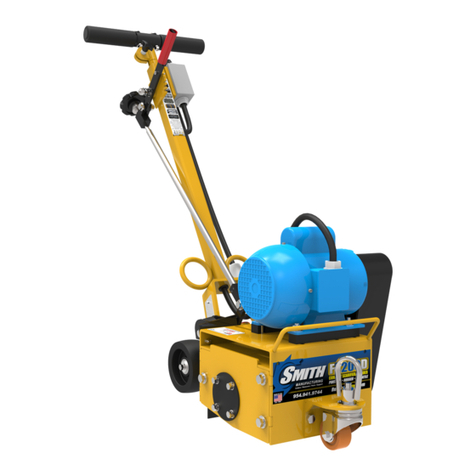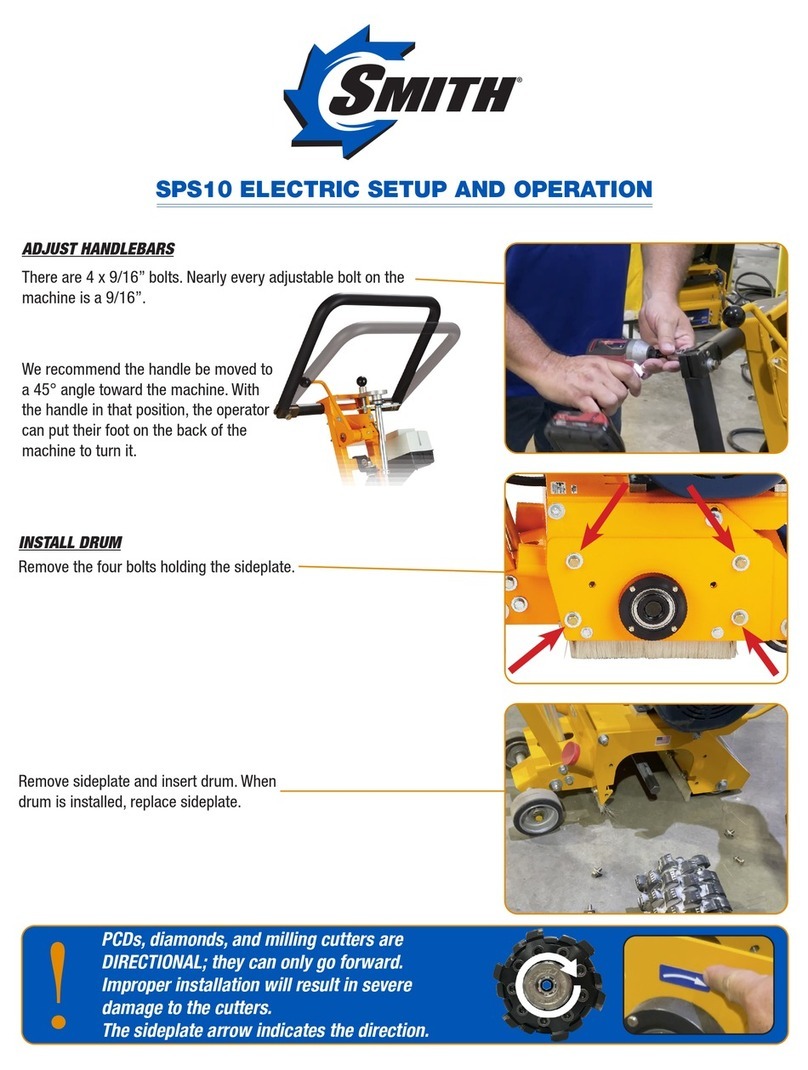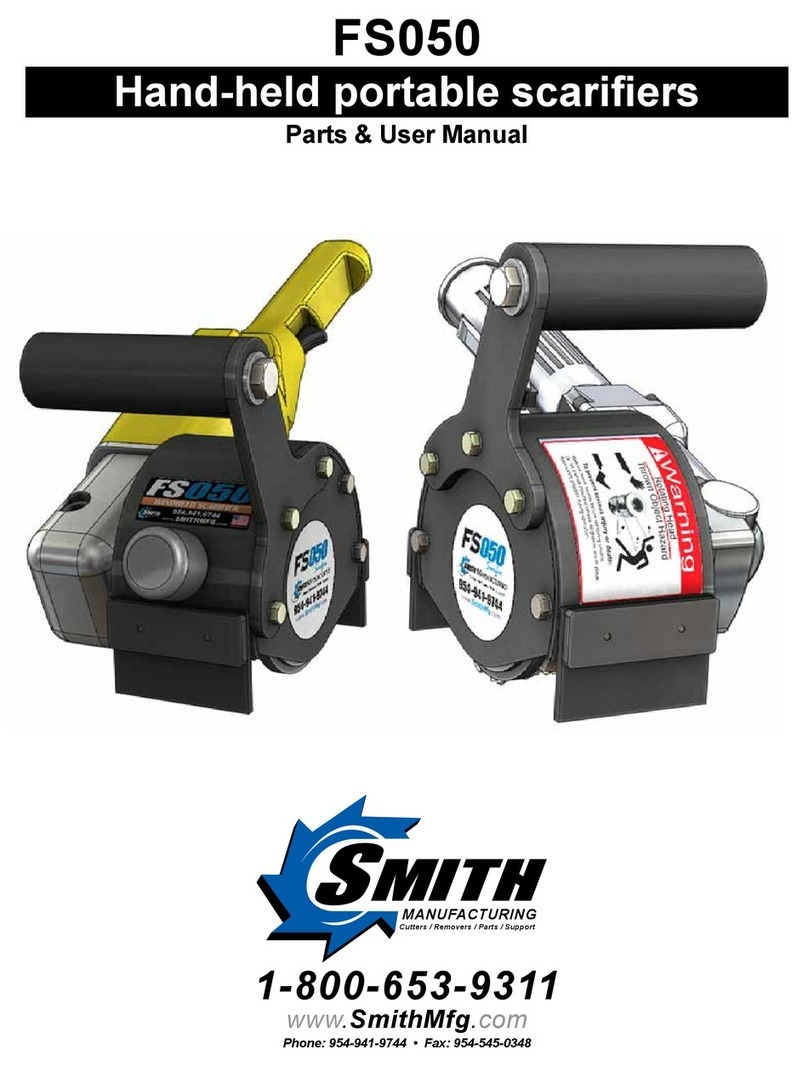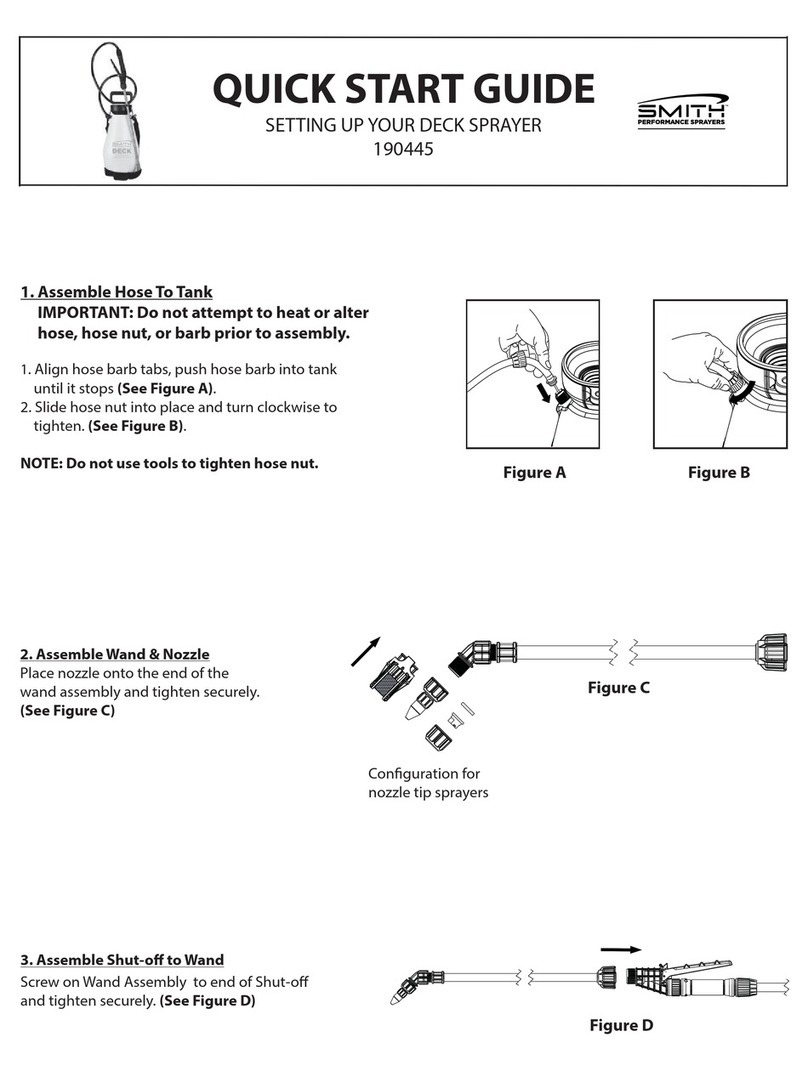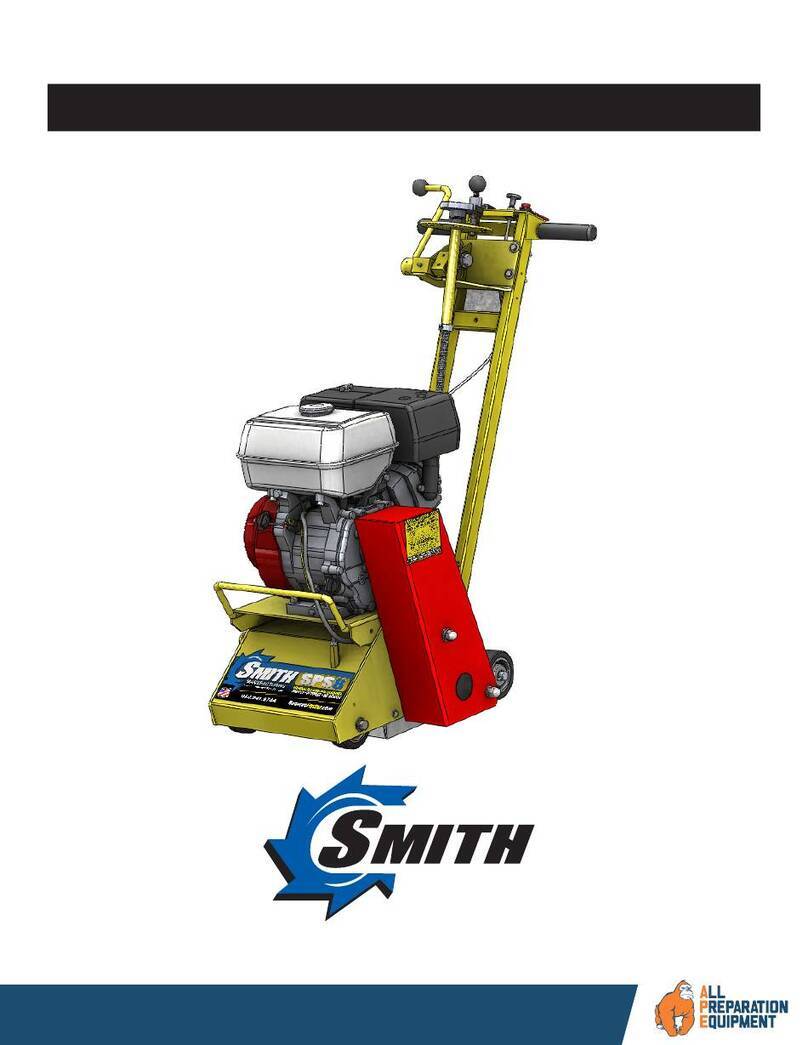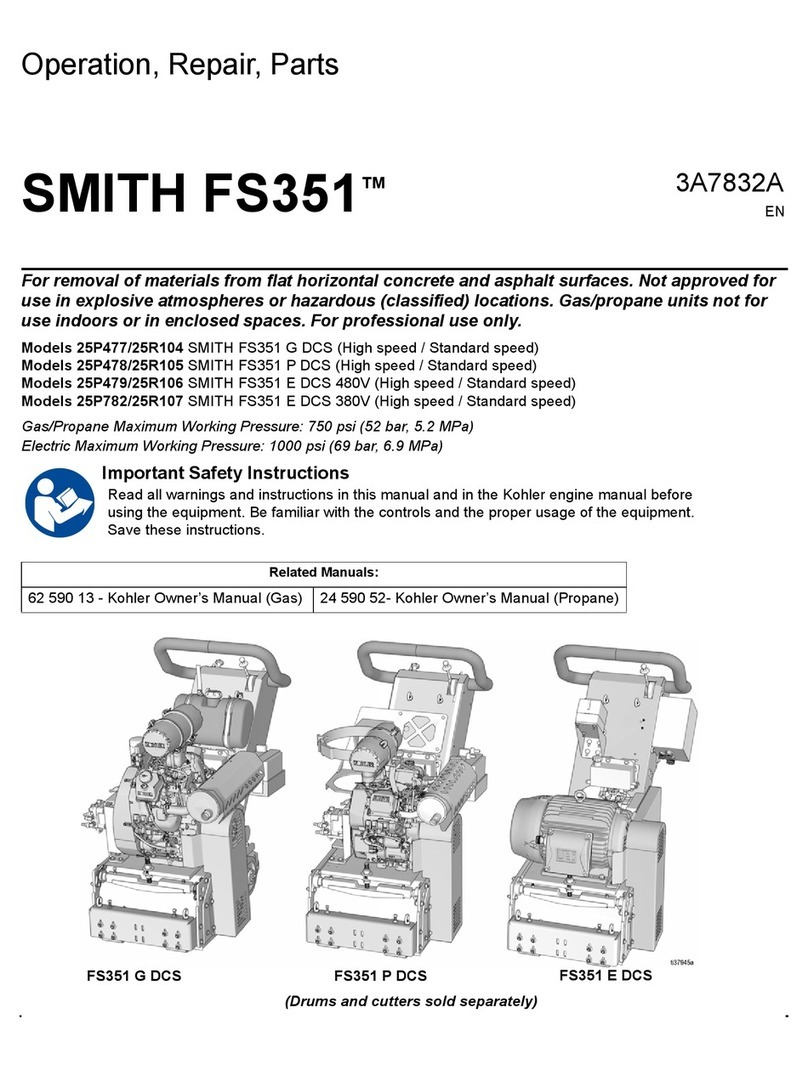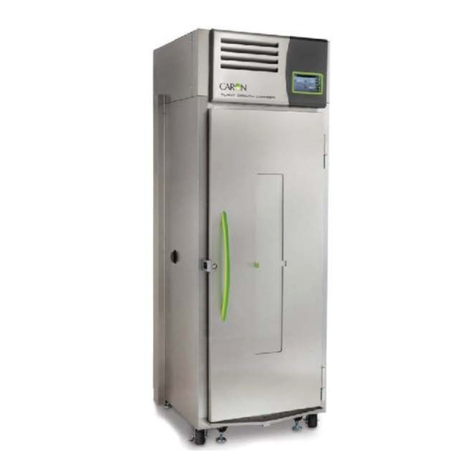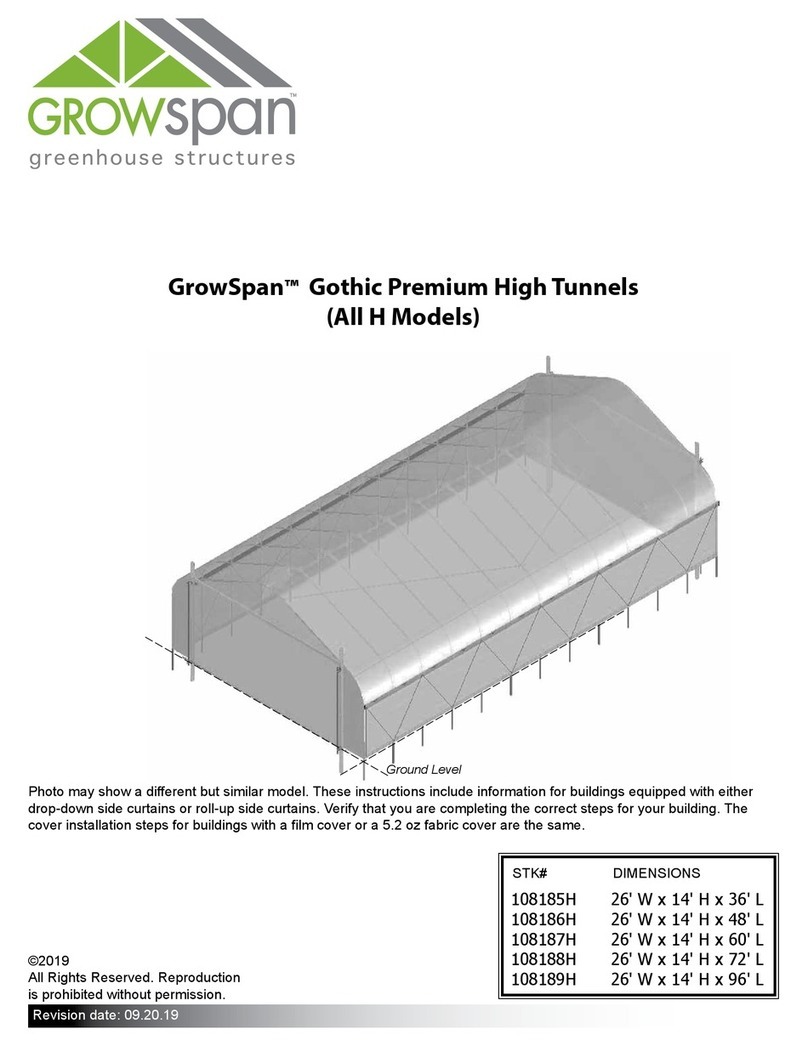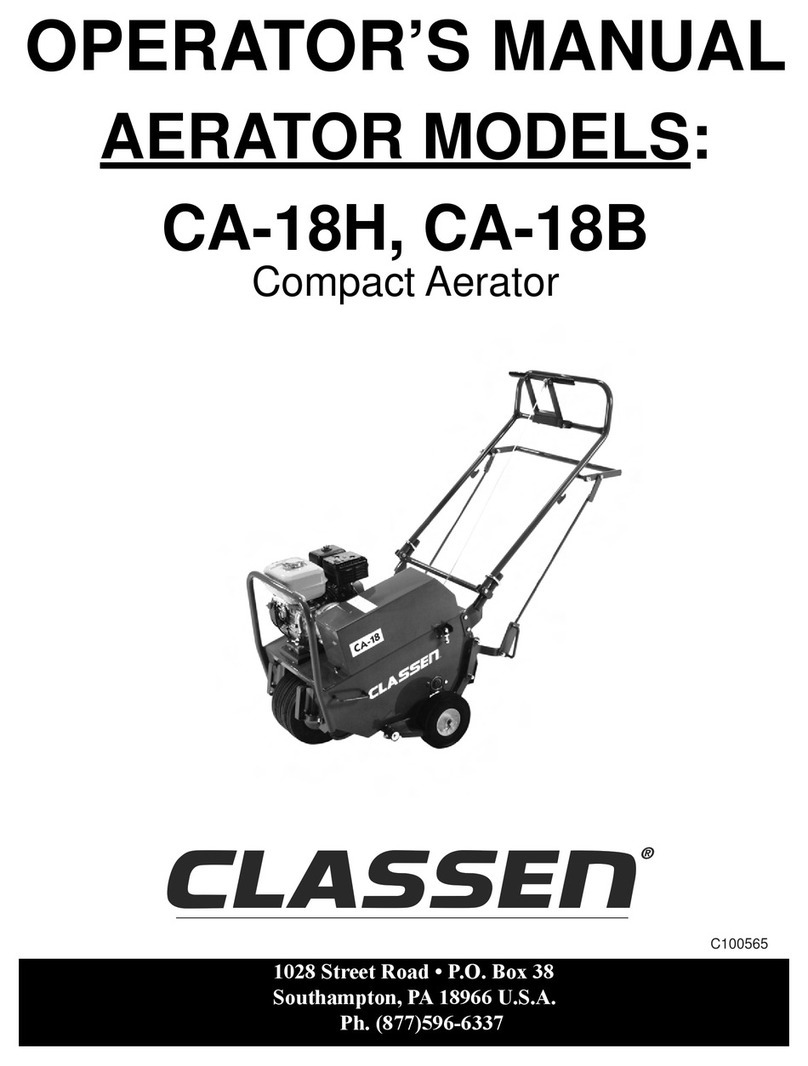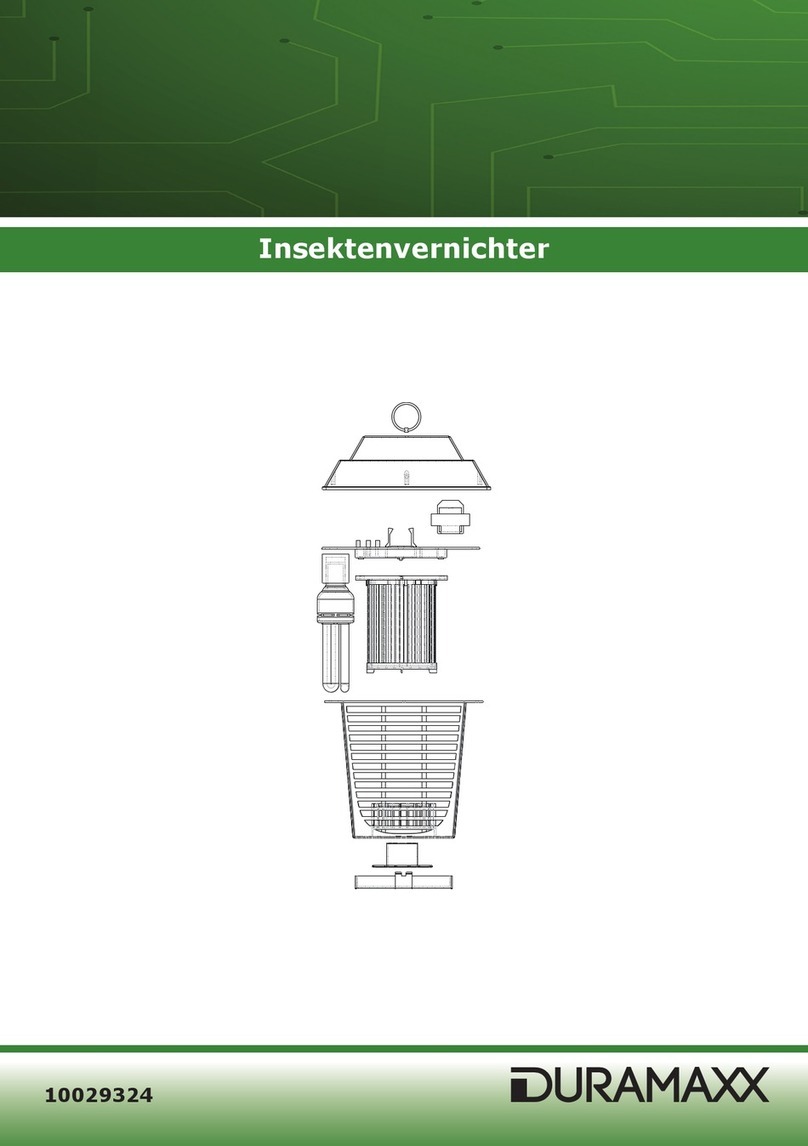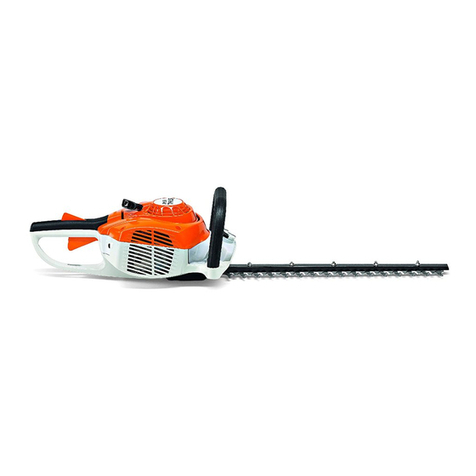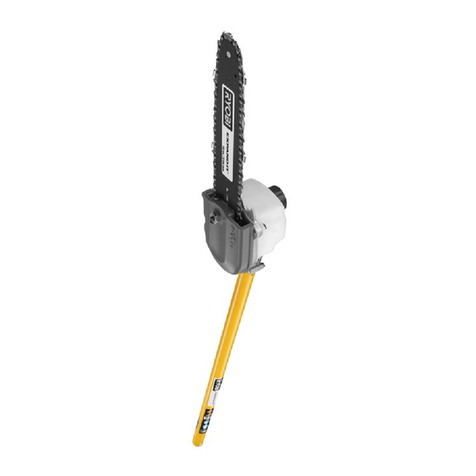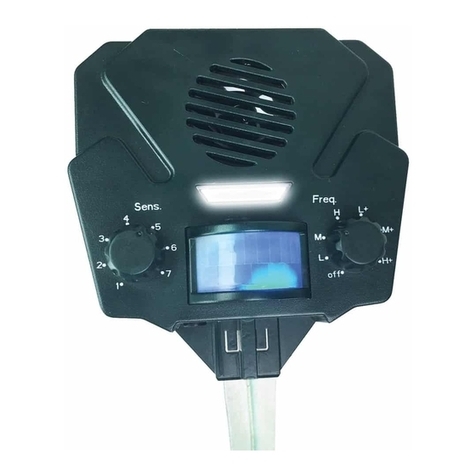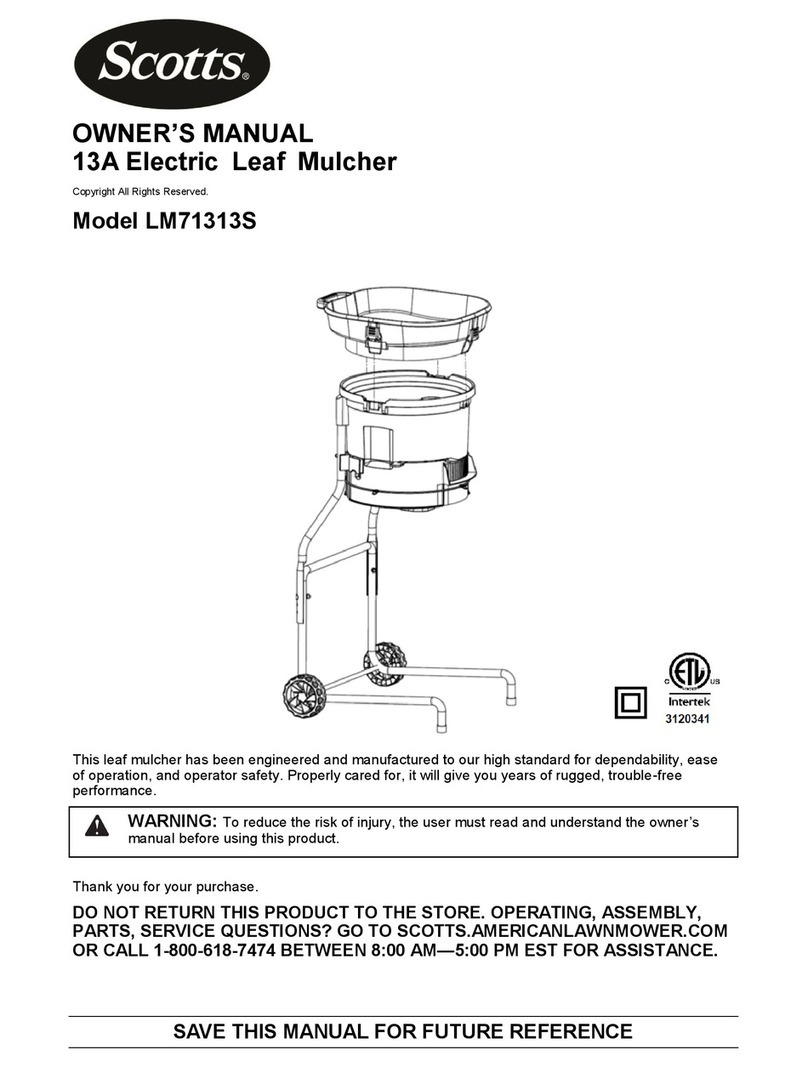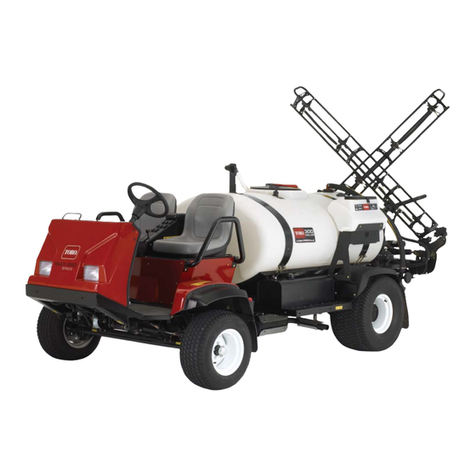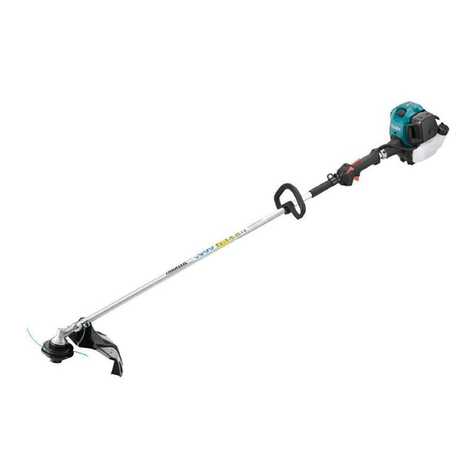Smith FS Series Use and care manual

3A5578D
EN
Operation, Repair, Parts
SMITH
For removal of materials from flat horizontal concrete and asphalt surfaces. For
professional use only.
FS Series - Forward Cut
Model FS200 (160 cc / 5.5hp)
Model FS209 (270 cc / 9hp)
SPS Series - Forward Cut
Model SPS10 (390 cc / 13hp)
Model SPS10 DCS (390 cc / 13hp Electric Start)
FS200 / FS209 SPS10 SPS10 DCS
(Drums and cutters sold separately)

SMITH Contents
23A5578D
SMITH Contents
Warnings . . . . . . . . . . . . . . . . . . . . . . . . . . . . . . . . . . . . . . . . . . . . . . . . . . . . . . . . . . . . . . . . . . . . . . . . . . . . . . . . . . . . . . . . . . . . . . . . . . . . . 3
Component Identification . . . . . . . . . . . . . . . . . . . . . . . . . . . . . . . . . . . . . . . . . . . . . . . . . . . . . . . . . . . . . . . . . . . . . . . . . . . . . . . . . . . . . . . 5
SMITH Models (FS200 & FS209) . . . . . . . . . . . . . . . . . . . . . . . . . . . . . . . . . . . . . . . . . . . . . . . . . . . . . . . . . . . . . . . . . . . . . . . . . . . . . . 5
SMITH SPS8 and SPS10 . . . . . . . . . . . . . . . . . . . . . . . . . . . . . . . . . . . . . . . . . . . . . . . . . . . . . . . . . . . . . . . . . . . . . . . . . . . . . . . . . . . . . 6
SMITH DCS Models (SPS10) . . . . . . . . . . . . . . . . . . . . . . . . . . . . . . . . . . . . . . . . . . . . . . . . . . . . . . . . . . . . . . . . . . . . . . . . . . . . . . . . . 7
Setup . . . . . . . . . . . . . . . . . . . . . . . . . . . . . . . . . . . . . . . . . . . . . . . . . . . . . . . . . . . . . . . . . . . . . . . . . . . . . . . . . . . . . . . . . . . . . . . . . . . . . . . . 8
Handle Bar Adjustment (Models SPS10 & SPS10DCS Only) . . . . . . . . . . . . . . . . . . . . . . . . . . . . . . . . . . . . . . . . . . . . . . . . . . . . . . . . . 8
Engine Kill Button . . . . . . . . . . . . . . . . . . . . . . . . . . . . . . . . . . . . . . . . . . . . . . . . . . . . . . . . . . . . . . . . . . . . . . . . . . . . . . . . . . . . . . . . . . . 8
Drum Installation/Replacement for SMITH FS Series Models . . . . . . . . . . . . . . . . . . . . . . . . . . . . . . . . . . . . . . . . . . . . . . . . . . . . . . . . . 8
Drum Installation/Replacement for All SMITH SPS Series Models . . . . . . . . . . . . . . . . . . . . . . . . . . . . . . . . . . . . . . . . . . . . . . . . . . . . . 9
Vacuum Attachment . . . . . . . . . . . . . . . . . . . . . . . . . . . . . . . . . . . . . . . . . . . . . . . . . . . . . . . . . . . . . . . . . . . . . . . . . . . . . . . . . . . . . . . . 10
DCS Control (DCS Models only) . . . . . . . . . . . . . . . . . . . . . . . . . . . . . . . . . . . . . . . . . . . . . . . . . . . . . . . . . . . . . . . . . . . . . . . . . . . . . . .11
Operation . . . . . . . . . . . . . . . . . . . . . . . . . . . . . . . . . . . . . . . . . . . . . . . . . . . . . . . . . . . . . . . . . . . . . . . . . . . . . . . . . . . . . . . . . . . . . . . . . . . 15
Machine Start Up . . . . . . . . . . . . . . . . . . . . . . . . . . . . . . . . . . . . . . . . . . . . . . . . . . . . . . . . . . . . . . . . . . . . . . . . . . . . . . . . . . . . . . . . . . 15
Cutting Material . . . . . . . . . . . . . . . . . . . . . . . . . . . . . . . . . . . . . . . . . . . . . . . . . . . . . . . . . . . . . . . . . . . . . . . . . . . . . . . . . . . . . . . . . . . 16
Cutting Drum Assemblies . . . . . . . . . . . . . . . . . . . . . . . . . . . . . . . . . . . . . . . . . . . . . . . . . . . . . . . . . . . . . . . . . . . . . . . . . . . . . . . . . . . . 17
Stop Cutting Material . . . . . . . . . . . . . . . . . . . . . . . . . . . . . . . . . . . . . . . . . . . . . . . . . . . . . . . . . . . . . . . . . . . . . . . . . . . . . . . . . . . . . . . 18
DCS Instructions . . . . . . . . . . . . . . . . . . . . . . . . . . . . . . . . . . . . . . . . . . . . . . . . . . . . . . . . . . . . . . . . . . . . . . . . . . . . . . . . . . . . . . . . . . 19
Maintenance . . . . . . . . . . . . . . . . . . . . . . . . . . . . . . . . . . . . . . . . . . . . . . . . . . . . . . . . . . . . . . . . . . . . . . . . . . . . . . . . . . . . . . . . . . . . . . . . . 21
DCS Control Translations . . . . . . . . . . . . . . . . . . . . . . . . . . . . . . . . . . . . . . . . . . . . . . . . . . . . . . . . . . . . . . . . . . . . . . . . . . . . . . . . . . . . . . 22
Repair . . . . . . . . . . . . . . . . . . . . . . . . . . . . . . . . . . . . . . . . . . . . . . . . . . . . . . . . . . . . . . . . . . . . . . . . . . . . . . . . . . . . . . . . . . . . . . . . . . . . . . 24
Drum Replacement for SMITH FS Series Models . . . . . . . . . . . . . . . . . . . . . . . . . . . . . . . . . . . . . . . . . . . . . . . . . . . . . . . . . . . . . . . . . 24
Drum Replacement for All SMITH SPS Series Models . . . . . . . . . . . . . . . . . . . . . . . . . . . . . . . . . . . . . . . . . . . . . . . . . . . . . . . . . . . . . 24
Belt Replacement (FS Series Models) . . . . . . . . . . . . . . . . . . . . . . . . . . . . . . . . . . . . . . . . . . . . . . . . . . . . . . . . . . . . . . . . . . . . . . . . . . 25
Belt Replacement (All SPS Series Models) . . . . . . . . . . . . . . . . . . . . . . . . . . . . . . . . . . . . . . . . . . . . . . . . . . . . . . . . . . . . . . . . . . . . . . 27
Belt Alignment . . . . . . . . . . . . . . . . . . . . . . . . . . . . . . . . . . . . . . . . . . . . . . . . . . . . . . . . . . . . . . . . . . . . . . . . . . . . . . . . . . . . . . . . . . . . 29
Bearing Replacement (FS Series Models) . . . . . . . . . . . . . . . . . . . . . . . . . . . . . . . . . . . . . . . . . . . . . . . . . . . . . . . . . . . . . . . . . . . . . . . 29
Bearing Replacement (All SPS Series Models) . . . . . . . . . . . . . . . . . . . . . . . . . . . . . . . . . . . . . . . . . . . . . . . . . . . . . . . . . . . . . . . . . . . 30
Diamond (High Speed) Kit Installation (SPS Series Models Only) . . . . . . . . . . . . . . . . . . . . . . . . . . . . . . . . . . . . . . . . . . . . . . . . . . . . 32
Troubleshooting . . . . . . . . . . . . . . . . . . . . . . . . . . . . . . . . . . . . . . . . . . . . . . . . . . . . . . . . . . . . . . . . . . . . . . . . . . . . . . . . . . . . . . . . . . . . . . 33
DCS Models Only . . . . . . . . . . . . . . . . . . . . . . . . . . . . . . . . . . . . . . . . . . . . . . . . . . . . . . . . . . . . . . . . . . . . . . . . . . . . . . . . . . . . . . . . . . 34
DCS Error Codes . . . . . . . . . . . . . . . . . . . . . . . . . . . . . . . . . . . . . . . . . . . . . . . . . . . . . . . . . . . . . . . . . . . . . . . . . . . . . . . . . . . . . . . . . . 35
DCS Actuator Rod Does Not Move . . . . . . . . . . . . . . . . . . . . . . . . . . . . . . . . . . . . . . . . . . . . . . . . . . . . . . . . . . . . . . . . . . . . . . . . . . . . 37
Parts . . . . . . . . . . . . . . . . . . . . . . . . . . . . . . . . . . . . . . . . . . . . . . . . . . . . . . . . . . . . . . . . . . . . . . . . . . . . . . . . . . . . . . . . . . . . . . . . . . . . . . . 38
Drive Assembly (FS200) . . . . . . . . . . . . . . . . . . . . . . . . . . . . . . . . . . . . . . . . . . . . . . . . . . . . . . . . . . . . . . . . . . . . . . . . . . . . . . . . . . . . 38
Drive Assembly Parts List (FS200) . . . . . . . . . . . . . . . . . . . . . . . . . . . . . . . . . . . . . . . . . . . . . . . . . . . . . . . . . . . . . . . . . . . . . . . . . . . . 39
Drive Assembly (FS209) . . . . . . . . . . . . . . . . . . . . . . . . . . . . . . . . . . . . . . . . . . . . . . . . . . . . . . . . . . . . . . . . . . . . . . . . . . . . . . . . . . . . 40
Drive Assembly Parts List (FS209) . . . . . . . . . . . . . . . . . . . . . . . . . . . . . . . . . . . . . . . . . . . . . . . . . . . . . . . . . . . . . . . . . . . . . . . . . . . . 41
Guide Bar Assembly (FS200 and FS209) . . . . . . . . . . . . . . . . . . . . . . . . . . . . . . . . . . . . . . . . . . . . . . . . . . . . . . . . . . . . . . . . . . . . . . . 42
Guide Bar Assembly (FS200 and FS209) Parts List . . . . . . . . . . . . . . . . . . . . . . . . . . . . . . . . . . . . . . . . . . . . . . . . . . . . . . . . . . . . . . . 43
Primary Housing Assembly (FS200 and FS209) . . . . . . . . . . . . . . . . . . . . . . . . . . . . . . . . . . . . . . . . . . . . . . . . . . . . . . . . . . . . . . . . . . 44
Primary Housing Assembly (FS200 and FS209) Parts List . . . . . . . . . . . . . . . . . . . . . . . . . . . . . . . . . . . . . . . . . . . . . . . . . . . . . . . . . . 45
Drum Housing Assembly (FS200 and FS209) . . . . . . . . . . . . . . . . . . . . . . . . . . . . . . . . . . . . . . . . . . . . . . . . . . . . . . . . . . . . . . . . . . . . 46
Drum Housing Assembly (FS200 and FS209) Parts List . . . . . . . . . . . . . . . . . . . . . . . . . . . . . . . . . . . . . . . . . . . . . . . . . . . . . . . . . . . . 46
Bearing and Shaft Assembly (SPS10 & SPS10DCS) . . . . . . . . . . . . . . . . . . . . . . . . . . . . . . . . . . . . . . . . . . . . . . . . . . . . . . . . . . . . . . 47
Bearing and Shaft Assembly (SPS10 & SPS10DCS) Parts List . . . . . . . . . . . . . . . . . . . . . . . . . . . . . . . . . . . . . . . . . . . . . . . . . . . . . . 47
Rear Assembly (SPS10) . . . . . . . . . . . . . . . . . . . . . . . . . . . . . . . . . . . . . . . . . . . . . . . . . . . . . . . . . . . . . . . . . . . . . . . . . . . . . . . . . . . . 48
Rear Assembly (SPS10) Parts List . . . . . . . . . . . . . . . . . . . . . . . . . . . . . . . . . . . . . . . . . . . . . . . . . . . . . . . . . . . . . . . . . . . . . . . . . . . . 49
Damper Assembly (SPS10) . . . . . . . . . . . . . . . . . . . . . . . . . . . . . . . . . . . . . . . . . . . . . . . . . . . . . . . . . . . . . . . . . . . . . . . . . . . . . . . . . . 50
Damper Assembly (SPS10) Parts List . . . . . . . . . . . . . . . . . . . . . . . . . . . . . . . . . . . . . . . . . . . . . . . . . . . . . . . . . . . . . . . . . . . . . . . . . . 50
Front Assembly (SPS10 & SPS10DCS) . . . . . . . . . . . . . . . . . . . . . . . . . . . . . . . . . . . . . . . . . . . . . . . . . . . . . . . . . . . . . . . . . . . . . . . . . 52
Front Assembly (SPS10 & SPS10DCS) Parts List . . . . . . . . . . . . . . . . . . . . . . . . . . . . . . . . . . . . . . . . . . . . . . . . . . . . . . . . . . . . . . . . . 53
Handle Bar Assembly (SPS10) . . . . . . . . . . . . . . . . . . . . . . . . . . . . . . . . . . . . . . . . . . . . . . . . . . . . . . . . . . . . . . . . . . . . . . . . . . . . . . . 54
Handle Bar Assembly (SPS10) Parts List . . . . . . . . . . . . . . . . . . . . . . . . . . . . . . . . . . . . . . . . . . . . . . . . . . . . . . . . . . . . . . . . . . . . . . . 54
Drive Assembly (SPS10 & SPS10DCS) . . . . . . . . . . . . . . . . . . . . . . . . . . . . . . . . . . . . . . . . . . . . . . . . . . . . . . . . . . . . . . . . . . . . . . . . . 56
Drive Assembly (SPS10 & SPS10DCS) Parts List . . . . . . . . . . . . . . . . . . . . . . . . . . . . . . . . . . . . . . . . . . . . . . . . . . . . . . . . . . . . . . . . . 57
Rear Assembly (SPS10) . . . . . . . . . . . . . . . . . . . . . . . . . . . . . . . . . . . . . . . . . . . . . . . . . . . . . . . . . . . . . . . . . . . . . . . . . . . . . . . . . . . . 58
Rear Assembly (SPS10) Parts List . . . . . . . . . . . . . . . . . . . . . . . . . . . . . . . . . . . . . . . . . . . . . . . . . . . . . . . . . . . . . . . . . . . . . . . . . . . . 59
DCS Control Box 18A790 . . . . . . . . . . . . . . . . . . . . . . . . . . . . . . . . . . . . . . . . . . . . . . . . . . . . . . . . . . . . . . . . . . . . . . . . . . . . . . . . . . . . . . . 60
SPS10 only . . . . . . . . . . . . . . . . . . . . . . . . . . . . . . . . . . . . . . . . . . . . . . . . . . . . . . . . . . . . . . . . . . . . . . . . . . . . . . . . . . . . . . . . . . . . . . 60
Parts List . . . . . . . . . . . . . . . . . . . . . . . . . . . . . . . . . . . . . . . . . . . . . . . . . . . . . . . . . . . . . . . . . . . . . . . . . . . . . . . . . . . . . . . . . . . . . . . . 60
Wiring Diagram . . . . . . . . . . . . . . . . . . . . . . . . . . . . . . . . . . . . . . . . . . . . . . . . . . . . . . . . . . . . . . . . . . . . . . . . . . . . . . . . . . . . . . . . . . . . . . . 61
DCS System . . . . . . . . . . . . . . . . . . . . . . . . . . . . . . . . . . . . . . . . . . . . . . . . . . . . . . . . . . . . . . . . . . . . . . . . . . . . . . . . . . . . . . . . . . . . . . 61
DCS Control Box . . . . . . . . . . . . . . . . . . . . . . . . . . . . . . . . . . . . . . . . . . . . . . . . . . . . . . . . . . . . . . . . . . . . . . . . . . . . . . . . . . . . . . . . . . 62
Technical Data . . . . . . . . . . . . . . . . . . . . . . . . . . . . . . . . . . . . . . . . . . . . . . . . . . . . . . . . . . . . . . . . . . . . . . . . . . . . . . . . . . . . . . . . . . . . . . . 63
CALIFORNIA PROPOSITION 65 . . . . . . . . . . . . . . . . . . . . . . . . . . . . . . . . . . . . . . . . . . . . . . . . . . . . . . . . . . . . . . . . . . . . . . . . . . . . . . 64
SMITH Standard Warranty . . . . . . . . . . . . . . . . . . . . . . . . . . . . . . . . . . . . . . . . . . . . . . . . . . . . . . . . . . . . . . . . . . . . . . . . . . . . . . . . . . . . . . 65

Warnings
3A5578D 3
Warnings
The following warnings are for the setup, use, grounding, maintenance, and repair of this equipment. The exclamation
point symbol alerts you to a general warning and the hazard symbols refer to procedure-specific risks. When these
symbols appear in the body of this manual or on warning labels, refer back to these Warnings. Product-specific hazard
symbols and warnings not covered in this section may appear throughout the body of this manual where applicable.
WARNING
DUST AND DEBRIS HAZARD
Grinding concrete and other surfaces with this equipment can create dust that contains hazardous
substances. Grinding can also create flying debris.
To reduce the risk of serious injury:
• Control the dust to meet all applicable workplace regulations.
• Wear protective eye wear and a properly fit-tested and government approved respirator suitable for
the dust conditions.
• Use equipment only in a well-ventilated area.
• Grinding equipment must be used only by trained personnel who understand the applicable work-
place regulations.
ENTANGLEMENT AND ROTATING PARTS HAZARD
Rotating parts can cut or amputate fingers and other body parts.
• Keep clear of rotating parts.
• Do not operate equipment with protective guards or covers removed.
• Do not wear loose clothing, jewelry or long hair while operating equipment.
• Before checking, moving, or servicing equipment, disable power supply.
BURN HAZARD
Cutters and engine can become very hot during operation. To avoid severe burns, do not touch hot
equipment. Wait until equipment has cooled completely.
EQUIPMENT MISUSE HAZARD
Misuse can cause death or serious injury.
• Do not operate the unit when fatigued or under the influence of drugs or alcohol.
• Do not leave the work area while equipment is energized. Turn off all equipment when equipment is
not in use.
• Check equipment daily. Repair or replace worn or damaged parts immediately with genuine manu-
facturer’s replacement parts only.
• Do not alter or modify equipment.
• Use equipment only for its intended purpose. Call your distributor for information.
• Keep children and animals away from work area.
• Comply with all applicable safety regulations.
• Maintain a safe operating distance from other people in the work area.
• Avoid any pipes, columns, openings, or any other objects protruding from work surface.
PERSONAL PROTECTIVE EQUIPMENT
You must wear appropriate protective equipment when operating, servicing, or when in the operating
area of the equipment to help protect you from serious injury, including eye injury, inhalation of dust or
chemicals, burns, and hearing loss. This equipment includes but is not limited to:
• Protective eye wear.
• Protective shoes.
• Gloves.
• Hearing protection.
• Properly fit-tested and government approved respirator suitable for the dust conditions.

Warnings
43A5578D
WARNING
FIRE AND EXPLOSION HAZARD
Flammable fumes, such as solvent and paint fumes, in work area can ignite or explode. To help pre-
vent fire and explosion:
• Use equipment only in well ventilated area.
• Do not fill fuel tank while engine is running or hot; shut off engine and let it cool. Fuel is flammable
and can ignite or explode if spilled on hot surface.
• Keep work area free of debris, including solvent, rags and gasoline.
• Keep a fire extinguisher in work area.
CARBON MONOXIDE HAZARD
Exhaust contains poisonous carbon monoxide, which is colorless and odorless. Breathing carbon
monoxide can cause death.
• Do not operate in an enclosed area.

Component Identification
3A5578D 5
Component Identification
SMITH FS200 & FS209
Component
A Handlebar
B Depth Engage Lever (coarse adjustment)
C Locking Nut (for handle height adjustment)
D Drum Adjustment Dial (fine adjustments)
E Fixed Front Wheel (optional)
F Drum Access Panel
G Feathering Front Wheel
HDust Skirt
I Vacuum Port
JEngine
K Engine Power Switch
L Engine Throttle
M Engine Kill Button

Component Identification
63A5578D
SMITH SPS10
Component
A Handlebar
B Drum Engage Lever
C Handlebar Adjustment Bolts
D Drum Adjustment Dial
E Drum Access Panel
FDust Skirt
G Vacuum Port
HEngine
I Engine Power Switch
J Engine Throttle
K Engine Kill Button

Component Identification
3A5578D 7
SMITH SPS10 DCS
Component
A Handlebar
B Power Switch
C Handlebar Adjustment Bolts
D DCS Control
E Electric Start Engine Switch
FDust Skirt
G Vacuum Port
HEngine
J Engine Throttle
K Engine Kill Button
L Battery
N Hour Meter/Tachometer
S Home Button
T Zero Button
U Cut Depth Button
V Up/Down Buttons
W Manual Height Adjustment
Component

Setup
83A5578D
Setup
Handle Bar Adjustment (Models
SPS10 & SPS10 DCS Only)
The handlebars are equipped with a high-density
vibration suppression material to reduce operator fatigue
when operating equipment. To adjust the handlebars to
a new position for different height operators please follow
these steps:
1. Using a 9/16” (14mm) wrench or socket, loosen the
bolts on both sides of the handlebars until the
handlebar moves freely.
2. Stand behind the machine and lightly tap the
handlebar to the desired position.
3. Re-tighten the bolts to 260-300 in-lb (29-34 N•m) to
lock the handlebars into position.
NOTE: Never operate equipment with loose handlebars.
The bolts must be fastened tightly assuring the handle is
locked into position.
Engine Kill Button
In the event of a malfunction or an accident (such as the
machine operator falling or losing footing), the SMITH is
equipped with a corded Engine Kill Button. Attach the
end of the cord to the operator’s belt or wrist, and snap
the clip into place on the button by raising the top of the
Engine Kill Button and inserting the clip into the gap. If
the operator becomes distanced too far from the
machine, the cord will detach from the button and the
machine will stop running. The engine can also be
stopped by pressing down on the Engine Kill Button.
Drum Installation/Replacement
for SMITH FS Series Models
Normal use will require periodic drum inspection and
may necessitate drum replacement. Time of
replacement will vary according to usage and load
factors.
Tools needed:
1. 17mm socket or wrench
2. Rubber mallet
1. Raise the Drum Engage Lever to the up position so
the cutter drum is off the ground.
To avoid injury from unexpected start up, disconnect
spark plug wire before you service your unit.

Setup
3A5578D 9
2. Remove the three hex head cap screws from the
Drum Access Panel using the 17mm socket or
wrench.
3. Remove Drum Access Panel (this may require the
rubber mallet to break it loose).
4. Slide out drum assembly (use caution as it is
heavy).
5. Once the cutter drum is removed, take to a
workbench for assembly.
a. Inspect condition of cutters, spacers, shafts,
bushings and drum.
6. Before replacing the drum onto hex shaft:
a. Check that all bearings are in good working
order.
b. Remove dirt and material build-up from inside
drive carriage and drum.
c. Lube all metal contacts.
7. Align and slide drum back onto the hex shaft.
8. Replace Drum Access Panel (lift up and lock into
place) over hex shaft and secure hardware.
NOTE: An extra drum loaded with cutters for rapid job
site replacement is recommended.
Drum Installation/Replacement
for All SMITH SPS Series Models
Normal use will require periodic drum inspection and
may necessitate drum replacement. Time of
replacement will vary according to usage and load
factors. Tools needed:
1. 9/16” socket or wrench.
2. Rubber mallet.
1. Non-DCS Models: Raise the Drum Engage Lever
to the up position so the cutter drum is off the
ground.
DCS Models: Press Home Button on DCS Control to
raise the cutter drum off of the ground.
2. Remove the four hex head cap screws from the
Drum Access Panel using the 9/16” socket or
wrench.
3. Remove the Drum Access Panel (this may require
the rubber mallet to break it loose).
To avoid injury from unexpected start up, disconnect
spark plug wire before you service your unit.

Setup
10 3A5578D
4. Slide out drum assembly (use caution as it is
heavy).
5. Once the cutter drum is removed take to a
workbench for assembly.
a. Inspect condition of cutters, spacers, shafts,
bushings and drum.
6. Before replacing the drum onto hex shaft:
a. Check that all bearings are in good working
order.
b. Remove dirt and material build-up from inside
drive carriage and drum.
c. Lube all metal contacts.
7. Align and slide drum back onto the hex shaft.
8. Replace Drum Access Panel (lift up and lock into
place) over hex shaft and secure hardware.
NOTE: An extra drum loaded with cutters for rapid job
site replacement is recommended.
Vacuum Attachment
1. If using a vacuum, attach vacuum hose to the
Vacuum Port.
2. Attach vacuum hose to the Inlet Port on the Cyclone
Separator (optional) or vacuum.

Setup
3A5578D 11
DCS Control (DCS Models only)
Buttons on the DCS Control have two functions, quick
press and long press. Quick press refers to pressing the
button and releasing the button quickly, while long press
is pressing the button and holding the button for two or
more seconds.
NOTE: “+” (plus) refers to above pavement surface. “-”
(minus) refers to below pavement surface.
Run Screen
Home Button
Quick Press: Takes the drum to its highest position.
Long Press: Brings up Menu Screen.
Zero Button
Quick Press: Takes the drum to the surface.
Long Press: Reprograms the zero point to the current
drum position.

Setup
12 3A5578D
Cut Depth Button
Quick Press:
Takes the drum to the Cut Depth Target.
Long Press:
- If at or above zero point: Opens new screen to
select desired cut depth using up/down buttons.
•To exit without saving, quick press the Cut
Depth Button.
•To exit with saving, long press the Cut Depth
Button.
- If below zero point: Reprograms the Cut Depth
Target to the current drum position.
Up Arrow Button*
Quick Press: Raises the drum by 0.01” (0.25mm, 10
mil).
Long Press: Raises the drum to Home position.
Down Arrow Button*
Quick Press: Lowers the drum by 0.01” (25mm, 10
mil).
Long Press: Lowers the drum to Cut Depth Target.
*Handlebar Rocker Switch has the same functions as
Up and Down Arrow Buttons.

Setup
3A5578D 13
Menu Screens
To display the Menu Screens, hold down Home Button
from the Run Screen. To save menu settings and return
to Run Screen, hold down Home Button from any Menu
Screen.
To cycle through selections in each Menu Screen, use
Up and Down Arrow Buttons.
To advance to next Menu Screen, quick press the Home
Button.
Menu Screen #1 - Language
Select your desired language (English, Spanish, French,
German, or International Symbols).
Menu Screen #2 - Units
Select your desired depth units (inches, millimeters, or
mils).
Menu Screen #3 - Model Select
Your SMITH model name can be found on the handle-
bar dashboard label. Select the model on the DCS Con-
trol which matches the model you have. This ensures
accurate depth readings. Hold down Up or Down Arrow
Buttons to cycle through models.
Menu Screen #4 - Software revision
Displays the revision of the software on the DCS Con-
trol.

Setup
14 3A5578D
Menu Screen #5 - Error Codes
Displays the most recent error code and the total number of
times that error has occurred. Cycle through previous error
codes using Up/Down Buttons.
Error Codes
E04: High Voltage
E05: High Motor Current
E08: Low Voltage
E09: Hall Sensor Error
E12: High Current (short circuit)
E31: Home Button Error
E32: Zero Button Error
E33: Cut Depth Button Error
E34: Up Button Error
E35: Down Button Error
To clear an error code that appears while on the Run
Screen:
1. Turn DCS Power Switch OFF.
2. Address/Fix the issue.
3. Turn DCS Power Switch ON.
NOTE: See Repair Manual for more information on Error
Codes and Troubleshooting.

Operation
3A5578D 15
Operation
Machine Start Up
DCS Models Only
Turn DCS Control Power Switch ON (Engine will not start
if power switch is off). See DCS Control (DCS Models
only), page 11, for help setting up the DCS Control.
Before starting engine, perform the following:
All Models
• Read and understand engine manual.
• Make sure all guards are in place and secure.
• Make sure all mechanical fasteners are secure.
• Inspect for damage to engine and other exterior
surfaces.
• Use correct cutters for each job. Make sure drum is
balanced and the correct number, size and type of
cutter wheels are being used. Make sure Drum
Access Panel is locked and secured.
• Inspect work area to locate any pipes, columns,
deck inserts, or other objects protruding from work
surface. Avoid these objects during operation.
• Open the fuel shut off on the gas tank and then
place the throttle lever at the “fast idle” position.
• Move the choke to closed.
• Set the engine power switch to ON.
•Non-DCS Models: Pull starter cord.
•DCS Models: Turn Engine Key to ignition.
• After the engine starts, move choke to open.
• Set throttle to desired setting.
If the Engine Does Not Start
• Check engine for proper gas level.
• Check the spark plug. Make sure socket areas are
clean and clear of debris, and the proper gap is set.
Replace if needed.
• Turn the Engine Power Switch on the front of the
engine to “On”.
• Engine may have tilted backwards. If so, allow oil to
drain after removing spark plug.
• If engine still does not start, refer to the engine
manual.
• The engine will not start without the Corded Engine
Kill Clip securely in place.
NOTE: The machine will still move with the engine off
because there are no wheel brakes.
Do not start machine while drum is in contact with the
ground. Doing so can cause the operator to lose
control of the machine, resulting in property damage
and/or personal injury.

Operation
16 3A5578D
Cutting Material
Before substrate removal, test run the drum with cutters
not touching the surface. If there is excessive vibration,
you need to re-balance the cutter set-up, check bearing
condition, and/or make sure that the Drum Access Panel
is secured.
1. Start Engine, see page 15.
2. Turn vacuum on, if using a vacuum.
3. Connect Engine Kill Button Cord to operator.
4. Slide Engine Throttle to desired
setting.
5. FS Series Models- Disengage Drum Engage Lever
and adjust to position where drum is almost
touching the ground.
SPS Series Models (Non-DCS Models Only):
Lower the Drum Engage Lever into the down
position.
6. Non-DCS Models: Rotate Drum Adjustment Dial
until drum comes into contact with surface and
desired depth is reached.
Maintain a safe operating distance from other people
in the work area. Avoid any pipes, columns, openings,
or any other objects protruding from your work sur-
face.

Operation
3A5578D 17
DCS Models: On the DCS Control, press the Cut Depth
Button to lower the drum to the programmes cut depth.
See DCS Instructions, page 19, for more details.
NOTE: Several test cuts may be needed to dial in
desired cutting depth.
NOTE: On harder surfaces, it may be best to make
several passes in increments of 1/32 in. (0.8 mm) to get
to the desired depth.
• Make certain that the drum is positioned to where
only the cutter tips strike the surface, and that the
drum assembly never comes into contact with the
substrate. The cutter tips alone should strike the
surface.
• The drum will not withstand substrate contact.
Contacting the removal surface too deeply will
cause premature wear to cutters, shafts, drum and
other components. The correct depth setting is
indicated by relatively little machine vibration.
• Cutting too deep only has negative results. Try to
remove materials in several passes rather than one,
deep pass. Several tests will show the best, most
appropriate cutter impact. Use a forward, backward
and/or circular pattern to achieve your desired
finish.
NOTE: Positioning the machine over the surface in
many directions, as well as dialing the hand wheel up or
down can help create desirable surface patterns. After
several hours of practice, the operator will become
comfortable and should be able to remove materials
faster with enhanced results.
NOTE: The engine should not labor. Run engine at full
speed and adjust forward speed to fit the work being
performed. Harder concrete surfaces will have to be cut
at a slower pace than asphalt or other softer surfaces.
Cutting Drum Assemblies
Different drum configurations can be used for different
applications. Visit www.SMITH.com/drumassembly for
instructions on how to assemble various drum
configurations.
Carbide Flail Cutter Assembly
Gradually adjust depth down to remove marking line
(minimal amount of paved surface should be removed).
Carbide Miller Cutter Assembly
Best results for deep cuts are achieved by making
several thin passes. A single pass should be no deeper
than 1/32 in. (0.8 mm) or damage to rods and cutters
could occur.
Diamond Blade Assembly (SMITH SPS
Series Models only)
Diamond Blades are designed to be cooled by airflow
around the blades. Lift blade out of cut every 10 to 15
seconds, then run at full speed for several seconds to
prevent excessive heat build up that could damage the
blades.
SPS Series Only (Non-DCS Models): Each increment
on Drum Adjustment Dial (D) is 0.010 in. (0.25 mm)
depth change of cutting drum.
NOTICE
Should you desire to tilt the machine, always tilt
forward. Tilting the machine backwards at any time
will flood the spark plug with oil and may cause dam-
age to your engine.
BURN HAZARD
Avoid touching or handling drum after use until it has
completely cooled.

Operation
18 3A5578D
Stop Cutting Material
1. Non-DCS Models: Raise Drum Engage Lever so
that the drum is off the ground.
DCS Models: On DCS Control, press the Home Button
to raise the drum off of the ground.
2. Slide Engine Throttle to low setting.
3. Depress Engine Kill Button and turn Engine Power
Switch to “OFF”.
DCS Models: Turn DCS Control Power Switch to OFF.
4. Clean the entire exterior of the machine after it has
cooled. Check for worn or damaged parts and
perform any required Maintenance on page 21.

Operation
3A5578D 19
DCS Instructions
Each time the DCS Control is turned on, the DCS actua-
tor will travel to the Home position.
Once the DCS Control finds Home, ensure the correct
model is selected as well as your desired language and
units. See Menu Screens, page 13, for instructions on
changing these settings.
Set Zero Point:
With the engine on, lower the drum by pressing the
Down Arrow Button until you hear the cutters make con-
tact with the pavement surface. Hold down the Zero But-
ton for 2 seconds. Your Zero Point has now been saved.
NOTE: The Cut Depth Target is based off of the Zero
Point. Re-program the Zero Point if the drum is changed
or worn.
Set Cut Depth Target:
Quick press the Zero Button to take the drum to the
pavement surface. Set the Cut Depth Target by:
1. Quick pressing the Down Arrow Button as many
times as needed to achieve your target. Then long
press the Cut Depth Button to save your target.
NOTE: This method will lower the cutting drum into
the pavement surface as you set your cut depth.
OR
2. From the Zero Point, long press the Cut Depth But-
ton until a new screen pops up. Use the Down
Arrow Button to enter your Cut Depth Target. Then
long press the Cut Depth Button to save your target
and return to the Run Screen.
NOTE: This method will keep the cutting drum sta-
tionary as you set your Cut Depth Target.

Operation
20 3A5578D
The DCS Control is now ready to grind/scarify. Long
press down on the Handlebar Rocker Switch to lower
the drum to your Cut Depth Target. Short press up or
down on the switch to adjust your Cut Depth on the fly.
When finished with your cut, long press up on the switch
to raise the drum to the Home position.
NOTE: The Zero Point and Cut Depth are referenced
from the Home position. Recalibrate your DCS Control
periodically by pressing the Home button or long press-
ing up on the Handlebar Rocker Switch.
NOTE: Pressing any button while the drum is moving to
Zero or Cut Depth will stop the command and halt the
drum from moving any further up or down until another
button is pressed.
Manual Height Adjustment
If the DCS Control is not usable (dead battery, etc.), the
drum height can be adjusted using the Manual Height
Adjustment feature.
1. Remove fuse from fuse holder near positive battery
terminal. This will protect the battery from damage.
2. Use a 6mm hex key to remove the screw plug on
the top of the linear actuator.
3. Insert 6mm hex key into the port the screw plug was
removed from.
- One revolution of the hex key results in 1/8”
(3mm, 125 mil) of adjustment at the cutter drum.
- Rotate counterclockwise to lower the drum;
rotate clockwise to raise the drum. Max rotation
speed of 1 revolution per second. Do not
use power tools in the Manual Height
Adjustment port.
4. Once the desired depth is achieved, replace the
screw plug in order to keep water and dust out.
This manual suits for next models
5
Table of contents
Other Smith Lawn And Garden Equipment manuals
Popular Lawn And Garden Equipment manuals by other brands
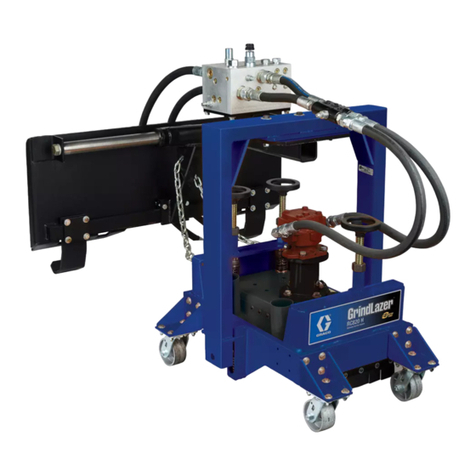
Graco
Graco GrindLazer HP RC820 H Operation - repair - parts

claber
claber OASIS EVOLUTION user manual

Mercia Garden Products
Mercia Garden Products ESDXL21PT032 Assembly instruction
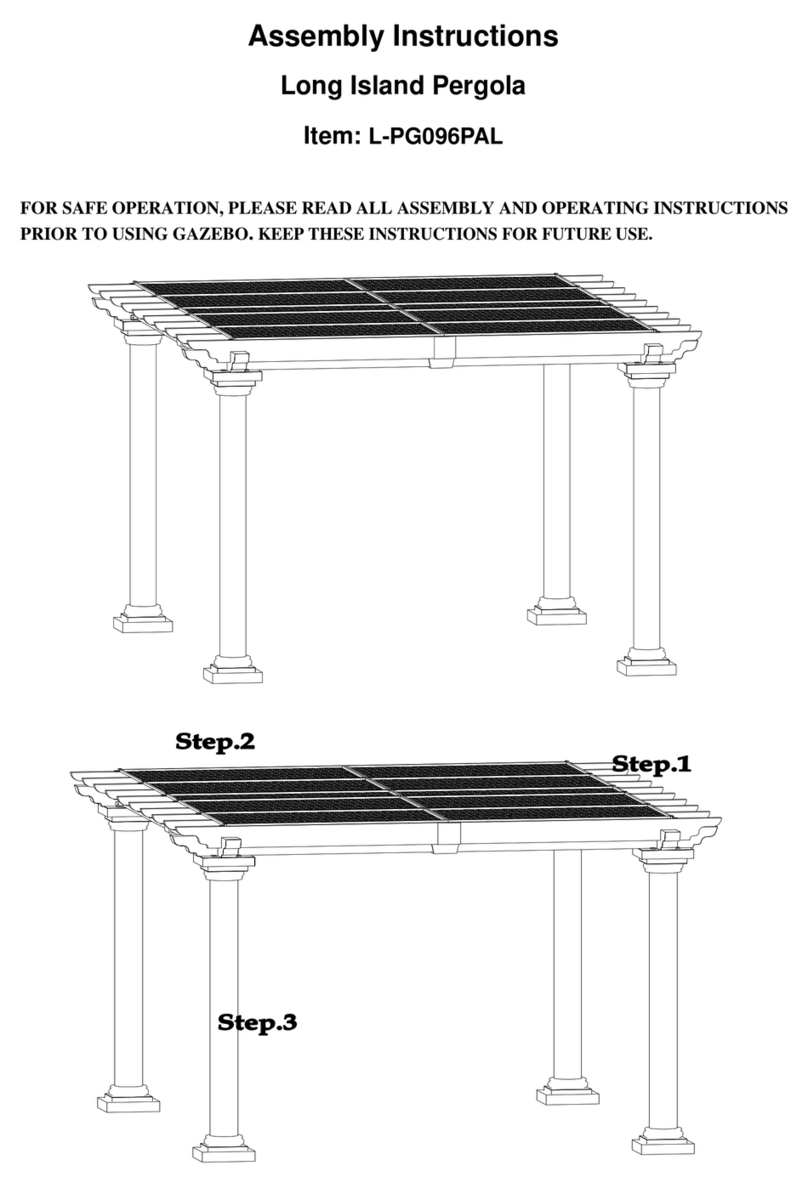
Sunjoy
Sunjoy L-PG096PAL Assembly instructions

Gardigo
Gardigo 70021 quick start guide
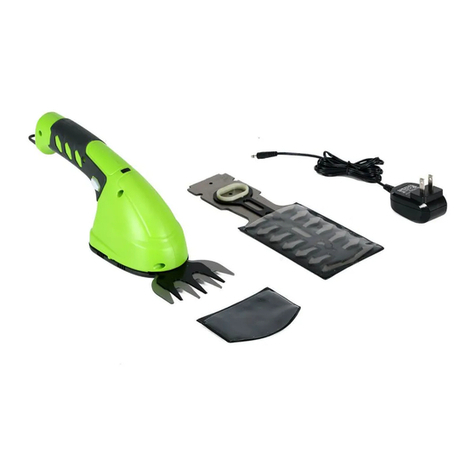
GreenWorks
GreenWorks 1600002 owner's manual
